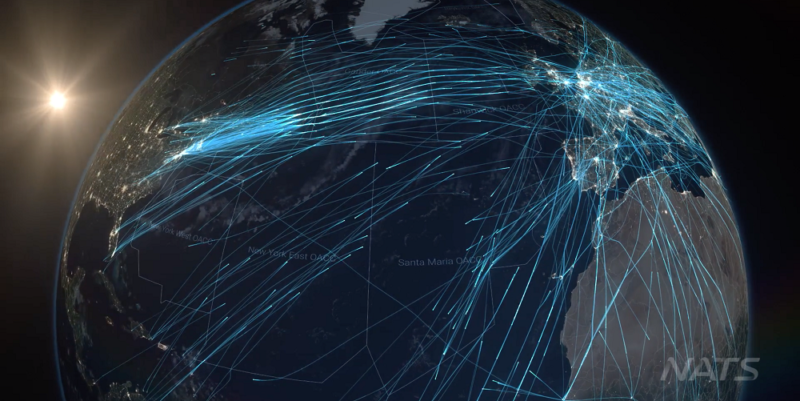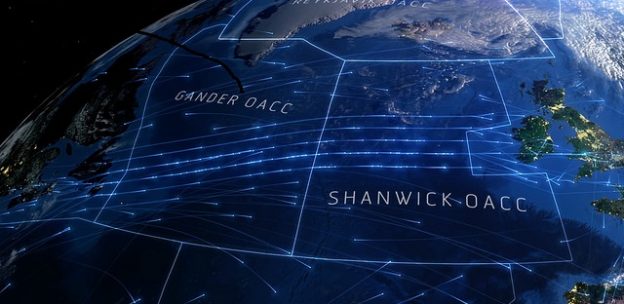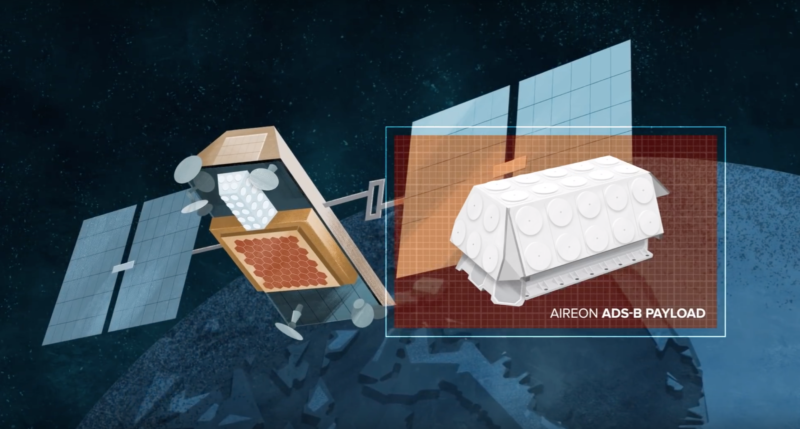I think it’s safe to say the last three years has been the most transformational in the history of North Atlantic air traffic operations.
That’s been down to two things.
The introduction of Aireon’s near real-time satellite-based surveillance in 2019 has been a total game changer. We’ve gone from a largely procedural environment where we would plot aircraft positions every 14 minutes to one where our controllers see an update every 7-8 seconds.
That’s an obvious safety benefit, but it has also allowed us to radically reduce the vast separation standards that the previous environment demanded. Instead of c.40 nautical miles, the minimum is now 14, meaning more aircraft can fly the trajectories they want at the speeds they want, helping save fuel, time and CO2.
Secondly, and less positively, has been the impact of Covid on international air traffic. The North Atlantic is the busiest piece of oceanic airspace in the world, but we went from handling up to 1,700 movements a day in 2019 to as few 200 on some days in 2020. While I’m sure that none of us would choose to go through the last two years again, the overall reduction in traffic did gift us the chance to accelerate existing plans that might otherwise have taken years to realise.
Addressing the future the Organised Track Structure (OTS) has been high on that list.

The OTS is an invisible multi-lane motorway that connects Europe and North America. Each day up to twelve tracks are created west and eastbound, designed to take advantage of the day’s Jet Stream and give the airlines an efficient route across the ocean. The tracks provide a predictable operating environment for both ATC and aircraft operators, but the concept has changed very little since its inception in the 1960s.
Last year, the combination of real-time surveillance and historically low traffic levels (c500 per day) gave us the opportunity to try out a radical idea – the total removal of the OTS.
In total, we saw 20 days without a single track being published, thereby allowing our airline customers to plan whatever route and trajectory would best suit them. We’re now working with 15 of them to analyse the results and simulate ‘OTS Nil’ on busier traffic days to understand if the benefits to them in terms of time, CO2 emissions and fuel burn would make a permanent change worthwhile.

OTS Tracks Nil recorded on 9 March 2021
A recent airline sponsored study highlighted that every minute saved on the ocean equates to £51, a figure that would very quickly add up to some substantial savings for many of our transatlantic customers.
From our perspective, it’s certainly possible to make the North Atlantic completely track-free with just some minor procedural and system changes required. Ultimately, it needs to be an airline led decision. That analysis work is on-going, but we are now able to announce some more immediate changes which will form the first step towards the reduction of the OTS.
From 1 March, anyone flying at Flight Level 330 and below will be able to do so entirely free from of the OTS structure. Even though there have never been any restrictions on flight planning in relation to random routes crossing the OTS, some airline operators have internal systems or procedures that prevent them from filing across OTS tracks with active flight levels. This change means anyone operating at those levels will have the flexibility to file a random route plan and choose the trajectory that suits them.

The Organised Track Structure in action
This is an initiative we had identified prior to the pandemic in collaboration with the North Atlantic OTS Development Focus Group, but over the last 20 months – together with NAV CANADA – we’ve consistently published OTS tracks with a reduced number of flight levels.
Making it a permanent change so we can offer our airline customers further choice and flexibility seems like an obvious conclusion, and again is something only possible thanks to the Aireon service.
All these changes (with more in the works) are in aid of improving the service we can offer. I hope and expect we’ll see the benefits of that work this year as traffic returns.
Comments
Please respect our commenting policy and guidelines when posting on this website.




04.02.2022
13:14
David Stinson
Montgomery Scott’s Law of Increasing Complexity:
“The more complicated they make the plumbing, the easier it is to stop-up the drain.”
Dave’s Law of Technological Evolution:
“Old systems that work well will be replaced by new ones that don’t.”
07.02.2022
16:29
Gus ortiz
Hello Jacob,
When did the reduction to 14NM longitudinal and 19NM lateral start (or will start)? Also, 19NM is less than 1/2 degree, so how will this be established for the crew to program?
08.02.2022
09:42
Aasim Khan
NATS blogs are a really useful way for the industry to understand important changes such as the abolition of PTS at FL330 and below.